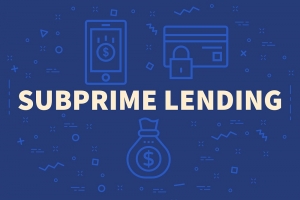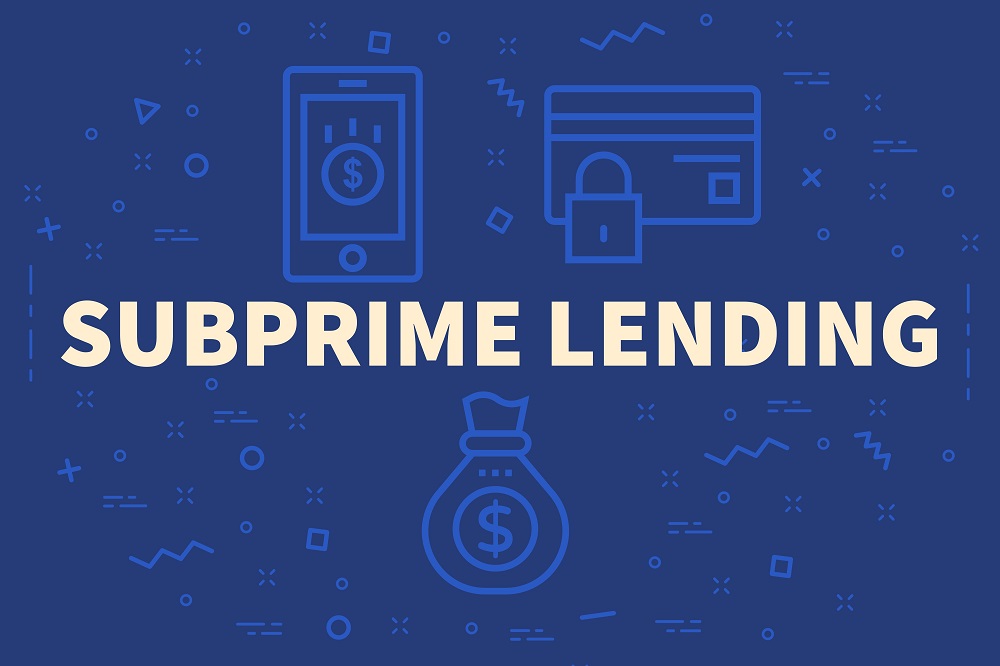What is a Subprime Lender and How Do I Avoid Them?
 Life after bankruptcy will entail some changes. Your credit score will be affected and you may find it difficult to get access to funding for your needs.
Life after bankruptcy will entail some changes. Your credit score will be affected and you may find it difficult to get access to funding for your needs.
Qualifying for a loan after the bankruptcy discharge is not impossible but it could be more difficult. This is why some people may look into the opportunities provided by subprime lenders. Avoiding subprime loans after a bankruptcy is incredibly important and here’s why.
What is a Subprime Loan?
Subprime loans are typically being offered to individuals who have a poor credit score and a limited access to other financing options. Most loans also have a subprime option – mortgages, automobile loans, personal loans, etc.
In such instances, the lender will examine the potential customer’s income level instead of their credit score. Because such borrowers pose a higher risk to lenders, interest rates in the case of subprime loans will be higher. There could be other unfavorable conditions, as well.
Subprime loans are considered risky. Such products are tailored to the needs of people who do not meet the requirements to qualify for other financial products. A high interest rate is not a good idea for an individual who has already gone through financial trouble in the past. Subprime loans are very expensive and the monthly instalments are likely to be high. These installments will leave very little wiggle room for unexpected expenses and emergencies.
The Importance of Avoiding Subprime Loans after Your Bankruptcy
Attempting to get a loan immediately after you’re done with the bankruptcy discharge will give you very few options. If you insist on getting money and making a purchase immediately, you’ll inevitably examine subprime options.
Because of all the risks, however, a subprime loan can quickly get you back to square one. If you can’t manage your monthly finances in an impeccable way, chances are that you will begin accumulating debt very soon.
Instead of jumping to claim such an opportunity, you may want to take some time. Small steps to improve your credit score will give you access to much better opportunities in the near future. Thus, if you don’t have to find funds for an emergency, you may want to postpone your plans.
A good secured credit card is going to be a solid choice. It will create a new history of revolving credit access and it will also help you ensure your stability. Paying off credit every single month and in a timely manner will rebuilt your score.
If you have to take a loan, do shop around.
Very often, subprime loans will be advertised as exclusive offers. People who have done a bankruptcy filing may even find themselves getting approached by financial institutions. Such offers aren’t the best ones. Shopping around and comparing the terms and conditions side by side will reveal all the pros and the cons.
In case of a very recent bankruptcy, you will end up with a loan that features a higher interest rate. Still, there will be differences from one service provider to another. A subprime loan doesn’t necessarily have to be the only choice.
Statistics show that borrowers are much more likely to default on subprime loans than on conventional loans. These are not a great choice, especially for people who have just completed the bankruptcy process. High interest rates are a serious problem but there could also be hidden fees and rigorous conditions outlined in the fine print.
All of this doesn’t mean that a subprime loan is going to ruin your life. Before accepting such an offer, however, carry out a careful calculation. Make sure you’ll be capable of repaying the loan. If not, you should wait until your credit score improves or you should be looking at an alternative source of funding.
Click here for information on 2018 bankruptcy filing fees.

